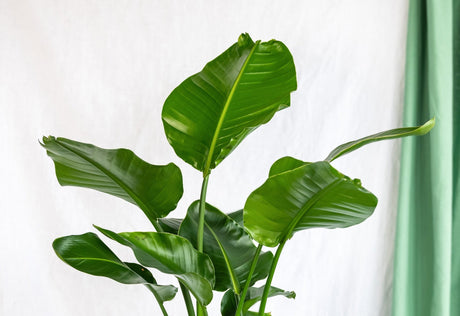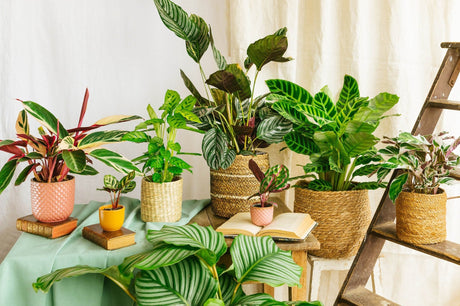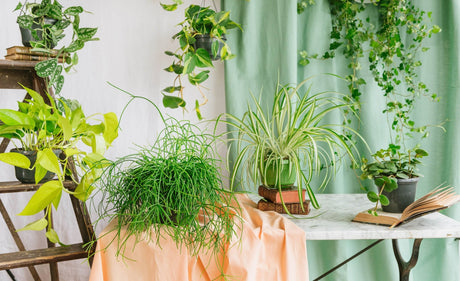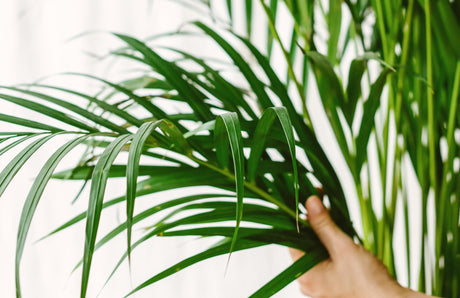Among its most prized gems, the Fittonia Red and Fittonia Green varieties stand out with brilliance.
The Fittonia Red, a true burst of fire, features shades of red vivid that illuminate every corner of your living space. life.
Fittonia Green exudes soothing elegance and refined simplicity, its leaves a green lush.
1. Watering the Fittonia
The Fittonia prefers a soil slightly moist, but not soggy . Excess water can lead to rot of roots. When you water, add water until it starts to flow through the holes of drainage into the pot, then allow excess water to drain.The frequency of watering depends on several factors such as size of pot, temperature ambient and humidity. In general, water about once times per week during the season of growth (spring and summer) and reduce the frequency to once times every two weeks in autumn and in winter when the plant is less active.
Tip: Insert your finger into the ground to a depth of approximately 2-3cm. If the soil is dry at this depth, it is usually time to water it.
2. Watering techniques
Gentle and gradual watering
Pour water slowly and gently at the base of the plant. Avoid excessive or abrupt watering, as this can compact the soil and disturb the plant's sensitive roots.Watering from below
Place the pot in a shallow saucer filled with water. Allow the plant to absorb water by capillary action through the drainage holes for about 20-30 minutes. Be sure to drain any excess water in the saucer after watering.3. The exhibition of Fittonia
Fittonia thriving in bright indirect light. Avoiddirect sunlight, as it can burn the leaves delicate of the plant. Place your Fittonia near a window with a curtain veil or in an area where the light is diffused and well distributed.windows facing east or west are generally best for Fittonia. They offer moderate brightness in the morning or afternoon, avoiding the most intense rays of the sun of the day.
4. When should I repot my Fittonia?
The period ideal for repotting the Fittonia is generally at beginning of spring, when the plant enters its period of growth enable. At that point, the plant will be better equipped to adapt to its new pot and conditions of growth improved.
Iit is recommended to repot the Fittonia every every 1 to 2 years. This allows to renew the substrate, to offer more space for growing roots and promote a better health overall of the plant.Here are some signs to look out for:
Outgoing roots
If you notice roots starting to come out of the drainage holes in the current pot, that's a clear indicator that your Fittonia is running out of space and needs a bigger pot.Slowed growth
If your Fittonia seems to stop growing as vigorously as it once did, despite proper care, it may be a sign that the roots are tight and it's time to repot.Slow Drainage
When you water the plant, observe if the water flows quickly through the pot or if it has difficulty flowing. If drainage is slow and water sits on the surface of the soil, this may indicate root compaction and a need for repotting.Pot sag
If your Fittonia's pot is sagging or becoming unstable, it may be a sign that the roots have filled up the available space and need more room to grow.Appearance of roots on the surface
If you notice roots beginning to appear above the surface of the soil, it may indicate that the current pot has become too small to hold the roots.Depleted Soil
When the potting soil in the pot is depleted, it can lose its structure and ability to hold moisture and nutrients. If the soil becomes compact, hard and difficult to moisten, it's time to repot.Withered or yellowed leaves
If your Fittonia's leaves are beginning to wilt, wilt or turn yellow despite proper care, this may be a sign that the plant is no longer getting needed nutrients due to lack of space.5. What fertilizer should I use for my Fittonia?
Use a fertilizer specifically formulated for plants interior. These fertilizers provide the nutrients essential that your Fittonia needs for thrive indoors. Here are some tips practical to guide you in applying fertilizer to your nervous plant:Choosing the right moment
Apply fertilizer during the active growth period, which is usually spring and summer. This is when your Fittonia needs more nutrients to support its growth and flowering.Correct dilution
If using liquid fertilizer, follow package directions for diluting fertilizer in water. Too concentrated a dilution can overload the plant with nutrients and cause damage. Too little dilution may not provide the necessary nutrients.Application frequency
For most liquid fertilizers, apply them every 4 to 6 weeks during the active growing season. Avoid over-fertilizing, as this can be harmful to the plant.6. How do I multiply my Fittonia?
To propagate your Fittonia, choose a healthy plant and cut a healthy stem with at least one or two leaves. Place the stem in water to promote the growth of the roots. Wait for new roots to grow, then plant the stem in a pot with a potting mix. Water regularly and keep the plant in shade partial for a while. Once the new plant has well grown, you can move it to a brighter place.7. Diseases of Fittonia
Fittonia can be susceptible to some health problems. Here are some diseases and problems common that can affect Fittonia:
Root Rot
Overwatering or poor drainage can lead to root rot. Symptoms include wilted leaves, yellowing and wilting of the plant. To avoid this, make sure the soil dries out slightly between waterings.Mildew
Downy mildew is a fungus that can cause white, gray or brownish spots to appear on the leaves. It can grow in humid conditions. Be sure not to overwater and avoid splashing water on the leaves.Falling Leaves
Falling leaves can be caused by sudden changes in conditions, such as a change in location or temperature fluctuations. Make sure the plant is in a stable and suitable location.Pests
Leaf discoloration
Leaves that turn yellow or pale can indicate nutrient deficiencies, such as nitrogen. Provide a balanced fertilizer to help maintain healthy growth.
8. Delivery and receipt of your plant
- Your plant is dry
- Is your plant wet ? Let the potting soil dry.
- Should I repot my plant right away ? No ! Wait until next spring or for signs that your plant needs repotting.






